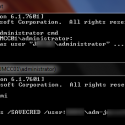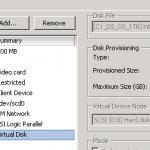mysqldump -u root -pSECRET –quote-names –databases mydatabasename > mydatabasename.sql
If find it best to include the –databases switch as this will add the ‘DROP DATABASE’ and ‘CREATE DATABASE’ statements when restoring – proceed carefully.
Quote Names:
Quoting the file names can be an insurance against users who may have created field names with spaces in them 🙁
mysqldump -u root -pSECRET –quote-names –databases mydatabasename > mydatabasename.sql
Dump All Databases:
mysqldump -u root -pSECRET –quote-names –all-databases > fullbackup.sql
Zip the ouput file:
nice mysqldump -u root -pSECRET –quote-names –databases dbname1 dbname2 dbname3 | nice gzip -9 > mybackup.sql.gz
Compatibility:
mysqldump -u root -p –compatible=mysql40 –databases databasename > mybackup.sql
Other compatibility options include:
ansi, mysql323, mysql40, postgresql, oracle, mssql, db2, maxdb, no_key_options, no_table_options, no_field_options
Dump structure-only:
mysqldump -u root -p –no-data –databases dbname1 dbname2 > mybackup.sql
Backup to another MySQL Server
mysqldump -u root -p –host=host1 mydatabase | mysql -u root -p –host=host2 -C newdatabase
The C option specifies to use compression. Note databases must exist already on the target server.
Restore
mysql -u root -p dbname < mybackup.sql
Character Sets / Collation Problems
Convert the database exporting first like this:
mysqldump -u username -p –default-character-set=latin1 –compatible=mysql40 dbname > dump.sql
Then import overwriting the current database (another backup would be wise):
mysql -u username -p –default-character-set=utf8 dbname < dump.sql
MySQL Adding Users
In case you need to access the MySQL database remotely (as in the above example to backup to another server):
mysql -u root -p
grant all privileges on *.* to ‘jonny’@’%’ identified by ‘thepassword’;
flush privileges;
exit

